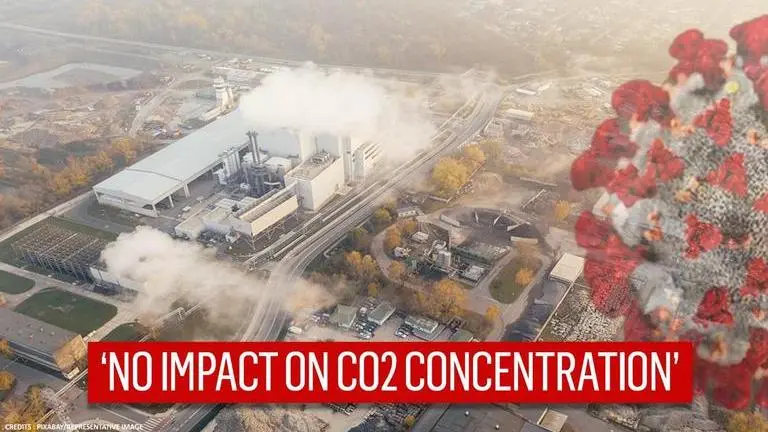Updated 23 November 2020 at 19:15 IST
COVID-19 has had no impact on greenhouse gas levels that drive climate change, says WMO
As per the World Meteorological Organization, the novel coronavirus has had no significant impact on the concentrations of carbon dioxide.
- World News
- 3 min read

As per the World Meteorological Organization, the novel coronavirus has had no significant impact on the concentrations of carbon dioxide in the atmosphere. However, the organization says that the lockdown provides a chance to ‘grow back better and take climate action’. According to the WMO Greenhouse gas bulletin, the industrial slowdown due the virus has not curbed record levels of greenhouse gases which are resulting in climate change. Also, this has further contributed to more extreme weather, ice melt, sea-level rise and ocean heat and acidification.
The industrial slowdown due to #COVID19 has not curbed record levels of greenhouse gases which are driving #climatechange, more extreme weather, ice melt, sea-level rise and ocean heat and acidification, according to WMO Greenhouse Gas Bulletin pic.twitter.com/5o7zdoSyYO
— World Meteorological Organization (@WMO) November 23, 2020
WMO releases its annual Greenhouse Gas Bulletin today at 1000 GMT on atmospheric levels of carbon dioxide and other heat trapping gases which are driving #climatechange pic.twitter.com/BlKoahUTQj
— World Meteorological Organization (@WMO) November 23, 2020
Greenhouse gas levels remain the same
A statement released by WMO says that containment measures have reduced emissions of many pollutants. It says, “Any change in CO2 concentrations - which are the sum of past and current emissions - is not greater than that caused by normal fluctuations in the carbon cycle that occur from one year to the next and by the marked natural variability to which carbon sinks such as vegetation are subject”. WMO Secretary-General Professor Petteri Taalas also elaborated on the situation as he spoke about Co2 remains in the atmosphere and its impact. He said, “Carbon dioxide remains in the atmosphere for centuries and even longer in the oceans. The last time a comparable CO2 concentration was recorded on Earth was between three and five million years ago. The temperature was then 2 to 3 ° C warmer and the sea level 10 to 20 meters higher than today, but there were not 7.7 billion inhabitants”.
(Radiative forcing of the atmosphere due to long-lived greenhouse gases, relative to 1750, and 2019 update of NOAA's annual greenhouse gas index. Image Credits: public.wmo.int)
Advertisement
Carbon dioxide concentrations spiked in the year 2019. As per the statement, the annual global average exceeded a significant threshold: 410 parts per million (ppm). The increase continues to remain the same in the year 2020. Since the year 1990, total radiative forcing has increased by 45 per cent due to long-lived greenhouse gases. This is four-fifths of what was increased due to CO2. Professor Taalas said, “In 2015 we exceeded the global threshold of 400 ppm. And just four years later, we passed 410 ppm. That speed of increase is unprecedented in our historical records. The reduction in emissions due to the containment measures is nothing more than a tiny irregularity on the long-term chart. We have to flatten the curve continuously”.
Advertisement
(Image Credits: Pixabay/RepresentativeImage)
Published By : Akanksha Arora
Published On: 23 November 2020 at 19:15 IST

